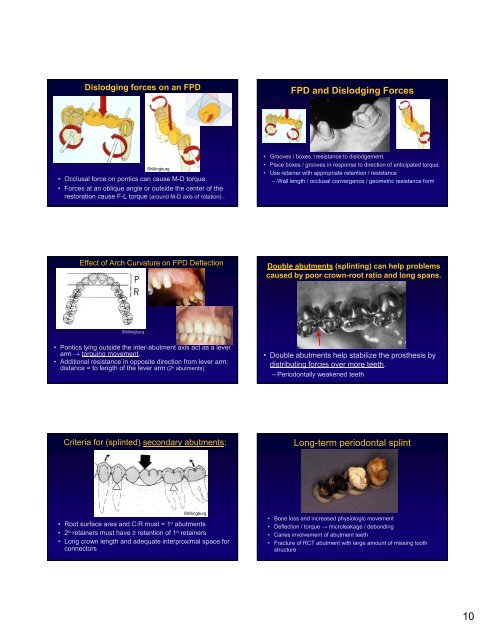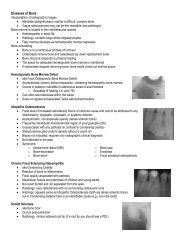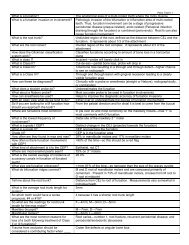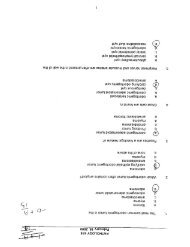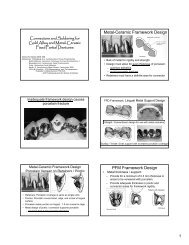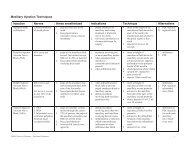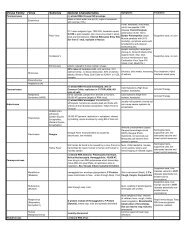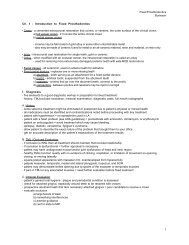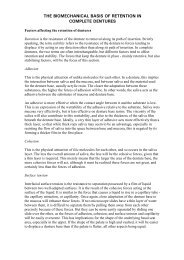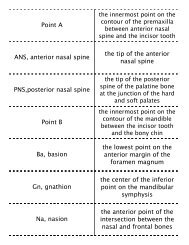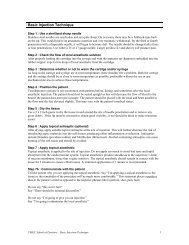1 FIXED PARTIAL DENTURES
1 FIXED PARTIAL DENTURES
1 FIXED PARTIAL DENTURES
Create successful ePaper yourself
Turn your PDF publications into a flip-book with our unique Google optimized e-Paper software.
Dislodging forces on an FPD<br />
FPD and Dislodging Forces<br />
Shillingburg<br />
• Occlusal force on pontics can cause M-D torque.<br />
• Forces at an oblique angle or outside the center of the<br />
restoration cause F-L torque (around M-D axis of rotation) .<br />
• Grooves / boxes 8resistance to dislodgement.<br />
• Place boxes / grooves in response to direction of anticipated torque.<br />
• Use retainer with appropriate retention / resistance<br />
– Wall length / occlusal convergence / geometric resistance form<br />
Effect of Arch Curvature on FPD Deflection<br />
Double abutments (splinting) can help problems<br />
caused by poor crown-root ratio and long spans.<br />
Shillingburg<br />
• Pontics lying outside the inter-abutment axis act as a lever<br />
arm → torquing movement.<br />
• Additional resistance in opposite direction from lever arm;<br />
distance = to length of the lever arm (2 o abutments)<br />
• Double abutments help stabilize the prosthesis by<br />
distributing forces over more teeth.<br />
– Periodontally weakened teeth<br />
Criteria for (splinted) secondary abutments:<br />
Long-term periodontal splint<br />
Shillingburg<br />
• Root surface area and C:R must = 1 o abutments<br />
• 2 o retainers must have ≥ retention of 1 o retainers<br />
• Long crown length and adequate interproximal space for<br />
connectors<br />
• Bone loss and increased physiologic movement<br />
• Deflection / torque → microleakage / debonding<br />
• Caries involvement of abutment teeth<br />
• Fracture of RCT abutment with large amount of missing tooth<br />
structure<br />
10


